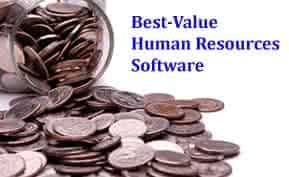Human Resources
What Can Software Do to Re-Humanize the Workplace and Improve Results?

Software covers so many bases in the modern enterprise, making countless administrative processes easier for the manager. It tracks people’s hours, pay, absences, progress, aspirations, benefits, training, productivity and so on, greatly improving administrative efficiency for most businesses. But while computers have streamlined so many administrative tasks in the last twenty years, employee satisfaction has decreased significantly. So have we lost sight of something important, some element of human nature that is not working so well in the computerized business environment? And what can software do to re-humanize the workplace so that satisfaction goes back up, people can work well and be healthy, and the business can keep the people whose skills it has nurtured?
Enervation
Businesses need their people to be able, intelligent and committed, collaborating with each other to meet the needs of the company and their customers – to be ‘engaged’ in the current jargon. However, unless they are used carefully, computers have the potential to alienate employees, making it less likely that they will do a good job and produce results sustainably. For example, a colleague who specializes in workplace stress was called in to a legal firm where sickness was rising inexorably. Staff attributed their rising stress levels to the introduction of a tracking system that automatically emailed them if they didn’t charge so many minutes of each hour to a customer – and set up a meeting with the boss if this happened a certain number of times. It was not a huge surprise that the sick days had started to rise after the system was introduced.
Of course, such systems generate vital business information – and they are not going to go away, anyway – but any system that attempts to control human behavior is fraught with dangers unless it is used with care. It’s not the fault of software – code is neither good or bad, it just does what its designer has written it to do. Systems that are written to do analysis – say of the way employee time is spent – will do just that. But as the workings of the human brain and body are outside their remit, their effect on a human being may not be helpful. Exactly the same applies to every element of the workplace environment and culture that is designed without the needs of the human being in mind, whether it involves computers or not.
Engagement
The current name for the magic ingredients that make employees productive and happy is ‘employee engagement’. High engagement levels are correlated with high productivity, low sickness, lower churn rate of key staff, and so on and so on. Just about everything that could make a manager happy is connected with a high engagement level, so everyone wants a slice of the engagement pie – just count the number of Google searches for ‘employee engagement’ and you’ll see how many managers are looking for a way to make it happen.
It would be wonderful to have a software solution to this problem – a program or service that could be introduced quickly and would go on working its magic in the background at low cost. Such a solution would save the increasing costs of workplace counseling and sick leave, and reduce the cost of the disruption caused by stress-related absence. So, having cast the computer as bogeyman in the employee engagement story, is there a role for software in re-humanizing the workplace?
The task is to make the business a place where people are happy, work well and want to be there. Now, a gardener will tell you that you cannot just put seeds on the ground and expect them to develop into great specimens. Success depends on having the right conditions – nutrients, sun, wind, shade, temperature, moisture, pH and so on. Get these right and the plant will grow to its potential – and the same applies to people. It really is possible to build an environment where people will be flexible, intelligent, creative, determined and enthusiastic about their work – if you get the conditions right.
Maslow’s Cubicle
This is not exactly news – we have known for a long time that people do better in some circumstances than others. Even in the heyday of scientific management, a hundred years ago, it was apparent that the stop-clock and the time-and-motion study might not be altogether a good thing – and that we should study human behavior as well as mechanical processes if we wanted to understand why some people did not do as their employers wished. Abraham Maslow produced the first widely-understood formulation of what humans need to do well, and there are now many developments from the same basic idea. The question is, though, how do you use these ideas in the practical context of running a business, and can you automate that task without negating its worth?
It takes a little work to get from psychological theory to practical application as business software. The first task is to unpack the basic human needs and relate them to the organisation of the workplace, and construct a way of measuring how well these are being met for each individual. It would be no use just to ask bald questions about autonomy, relatedness and competence, for example, you have to relate these to practical everyday items like skills, timetables, motivation, availability of information, and so on. But once you have done all this, you can build a system that assesses how well each employee is doing on the various domains of the list, then do some math to find out where the best gains for the organisation will be found, then turn the result into positive, achievable actions that can be fed back into the workplace to improve results.
In the case of our own SaaS offering – How to Motivate a Team – the output shows you how much of the time your staff are not working to their potential, and it tells you, for each individual and for the whole team, how to get the whole company working better. If you follow the lines of inquiry suggested by the system and then re-score – say three months down the line – you will be able to see how much better the staff are doing, and so how well you have done. In time the system becomes unnecessary, as managers and staff learn more about how to work in ways that fit with the underlying nature of the human being.
This augments your existing HR software, showing you the effect of business decisions at a human level, and gives you the information which, in a mechanized age, tends to be missing. It takes the guesswork and experiment out of leadership because knowing more of what is going on in your people’s heads, you can do more of what works and less of what doesn’t. Customers like it because it answers their questions about why people aren’t doing what they should (or are doing what they shouldn’t), and because it opens their eyes to some of the processes that are going on, unseen, in their employees‘ minds (and their own heads, too).
Looking for more information on HR software products or best practices? Browse reviews, articles and company interviews in our Human Resource Management Research Center. Additionally, check out our Top 10 Human Capital Management Software report.
Howtomotivateateam is a new business that helps managers understand and improve the motivation and engagement of their teams. It provides individual and team-level reporting, showing managers where and how to get the best gains in team performance.






